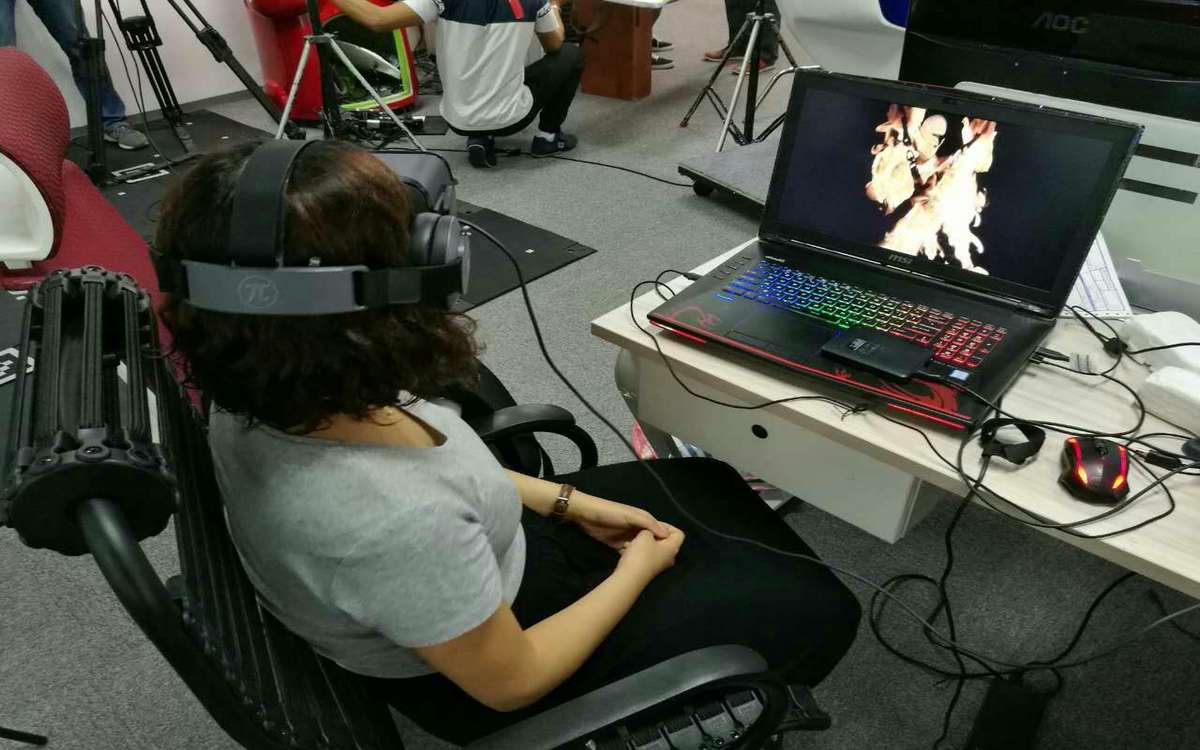- To date, virtual reality users have had to choose between price and experience.
- Shanghai-based Pimax has released a 4K virtual reality headset for RMB 1,999.
- The market is largely still limited to three big companies: Oculus Rift, HTC Vive, and Sony PlayStation VR.
There is a dilemma when it comes to purchasing a virtual reality (VR) headset. Low-priced, smartphone-based VR headsets are affordable, yet its experience cannot beat that of PC-based headsets, which are still too pricey for average consumers. Shanghai-based Pimax aims to solve that dilemma introducing PC-based VR headset Pimax 4K, priced at RMB 1,999 (US$299).
Mushrooming VR arcades in China is a new phenomenon to help users experience PC-based VR at a lower price, but the market is largely still limited to three big companies: Oculus Rift, HTC Vive, and Sony PlayStation VR.
“Our target user is VR specialists and game players who think HTC Vive is too overpriced compared to its experience. They can try out ours. Rather than aiming a higher revenue, we want more people to enjoy our product,” co-founder of Pima, Veni Tang told TechNode.
Previously, the Shanghai-based company used to make VR headsets for hospitals in the medical industry. Sourcing LTPS LCD display from a Japanese company, which the company refused to disclose its name, Pimax 4K’s display is 5.7 inches wide and its PPI is 806.
“Our capacity is that we can seamlessly integrate 4K hardware and 4K software with our sourcing company’s 4K display,” Mr. Tang says. “Pimax 4K’s MTP (Motion to photon) latency is very low so that users are unlikely to experience disorientation and motion sickness while wearing the VR headset.”
The question is, how did the company get the price down to RMB 1,999?
“Material largely controls the cost, and we used affordable material. We reduced the design budget and made the best use of the supply chain to bring down the cost. We are focusing only on the word-of-mouth and didn’t push any marketing, which also brought down sales channel cost,” Mr. Tang says.
In order to cut down the marketing cost, Pimax launched its 4K headset’s crowdfunding campaign on JD.com, priced at RMB 1,699. The campaign surpassed its goal of RMB 500,000 ($75,000) and raised a total of RMB 2,042,859 ($306,000) this June. After the campaign, the VR company raised tens of millions of yuan (a few million USD) in a series A funding from Ivy Capital on this July.
“Ivy Capital is a steady VC in China. Their founder has a strong background in technology and he values our company’s technology strength,” Tang says.
“The next version of Pimax 4K will provide higher resolution, wider field of view, lighter weight, and more interaction with the users. We aim to be more accessible to many people and to become the brand for the masses.”
Lagging behind VR investments and lack of quality content has made some speculate on the arrival of a VR winter. Global VR investment deal volume peaked to 37 deals in the fourth quarter of 2015, however, showed a two-quarter decline this year, with only 23 deals in the second quarter of 2016, according to a VR report released by market research firm CBI.
“Before, VR investment has been just too hot. Now it’s [a bit cooler]. Investors are just more careful and are looking for a very good deal, just that,” Tang says. “In the VR winter, you should have money to survive and do better than others. VR companies should focus on users, rather than trying to raise funding at this time.”
— A version of this article first appeared on Technode.






